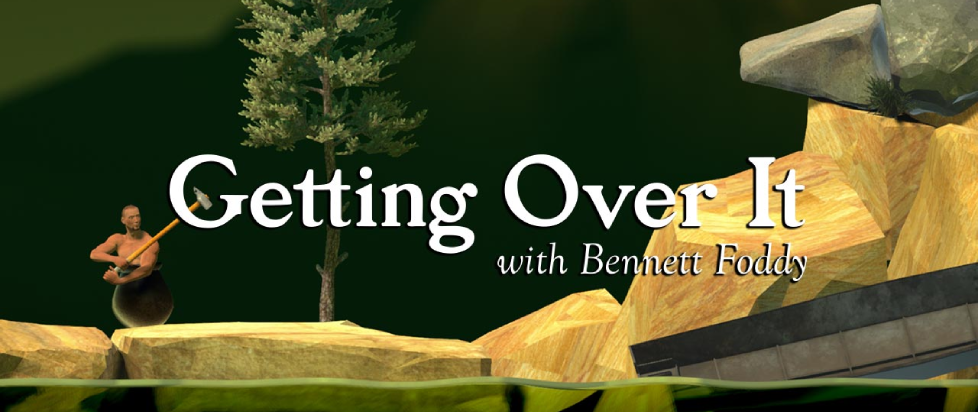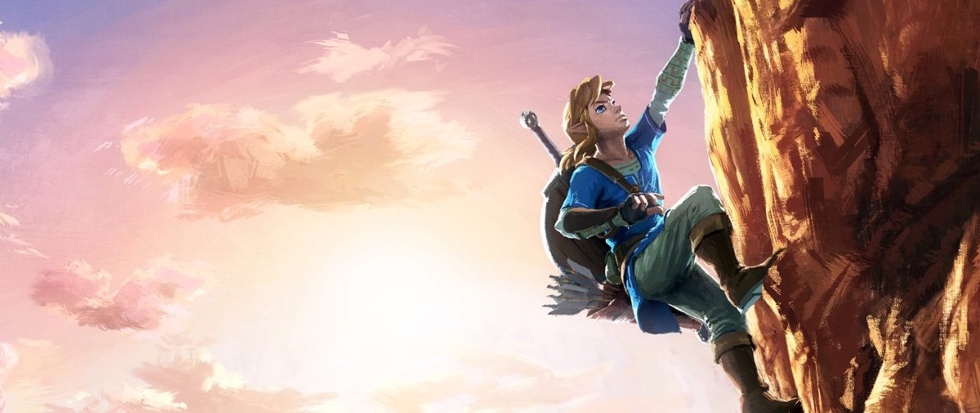
Learning to Love the Mountain While Getting Over It
Bennett Foddy is not subtle about the emotions that Getting Over It intends to evoke:
“I made this game for a certain type of person,” he says at the top of the sale page, “to hurt them.”
Upon its release in 2019, the B-Game/Homage/Indie earned its fair share of gamer rage. Streamers suffered through their attempts to climb the mountain, and the falls became fodder for intense reactions. Rather famously, for example, Markiplier found himself so enraged by a loss of progress that he chucked his chair into the wall behind him. A constant presence in his game, Bennett Foddy became a tormentor, his voice chiming in to rub salt into the wounds that proved that players could not, in fact, Get Over It.
This was in some ways inevitable. Getting Over It has that natural moxie to incite rage within a player. It is fickle, difficult to learn, with controls that seem far too analog for the precision the game requires. One tiny twitch in the wrong direction can launch the player character (rather impishly named Diogenes, a reference to the Cynic philosopher who made a game of baiting engagement from more refined contemporaries) back down towards the depths of the starting area. And yet, I wouldn’t call it a “Rage Game.”
Games like I Wanna Be The Guy or Cat Mario exist to piss players off. Their sole goal is to create frustration in players. The way they do this is in breaking the social contract that exists between players and the games we play. We expect a game to properly telegraph hazards, to have a cogent internal logic that lets us anticipate coming challenges, and to have obstacles that can be avoided with reflexes or proper foresight. In I Wanna Be The Guy, instant-death apples fall upwards, defying gravity just to catch the player off guard. A pillar falls from off-screen onto the only safe ground. They are, in a sense, puzzle games: rage aside, the player has to uncover the counter-intuitive actions that allow them to progress to the next screen.

Herein lies another, crueler discrepancy between Getting Over It and the archetypal rage game. Most rage games don’t stymie progress past a certain point. Navigating a screen or two is a checkpoint that resets the consequences of a failure. Save points allow for clear hurdles of advancement. The game intends a player to need many tries to parse out the right pattern of action, and therefore makes that viable. Getting Over It doesn’t really give the player that chance to breathe. Every action holds the same risk: the loss of some or all progress. The moment that the player makes a movement, there is no taking it back. The game saves almost persistently to ensure that the player can’t take anything back. A mistake is tangible and permanent. No amount of saving or reloading can reverse a failure. We roll back to the very bottom of the mountain.
It’s all very Sisyphean. The task is made endless by its own absurdity. Our response to it prolongs this sense of hurt.
Bennett Foddy, his voice and musings ever present throughout the player’s climb(s), plays no part in the player’s failure.
And that makes it worse.
In throwing myself back into this struggle in preparation for this article, I couldn’t make Foddy into my enemy as many players had when the game was first achieving virality. He hadn’t forced me at gunpoint to climb the mountain of assets and assorted things; my hands were not cuffed to the desk; I could close the game, delete it, and walk away.
To do so, though, would hurt me far more than Mr. Foddy ever could.
To begin the task of climbing was to promise myself that I could reach the summit.
In some ways, the pain of falling is death by a thousand cuts: each split-second of stomach-sinking panic as my hammer failed to move in the way I’d wanted – more accurately, I failed to move the mouse in the way I thought possible – followed by a crushing dread in the back of my throat. Sometimes, in my panic, I could make a situation worse by flailing my hammer around, knocking myself from a slightly lower platform back to the depths of hell by the tree.
But the more I played, struggled, suffered, endured, the pain became a part of the experience. I stopped fearing it.
In other words, because I cannot resist the chance to say it, I started to get over it.

Our relationship with games is as much about self-fulfillment as entertainment. We see ourselves as the characters we inhabit – for a short period of time, their desires and goals become ours. However unbelievable, mundane, or chaotic, the thing that stands between these collections of pixels or polygons and their wildest dreams becomes our ability to make it happen. We climb mountains because they’re there, in the real world or simulated behind a screen.
Five years later, I’m unashamed to admit that I haven’t reached the mountaintop. I’ve made peace with that. I pick up the game every few months just to spend an hour wrestling with the game, pushing myself to retain a state of calm even as I fall. Just a little bit further each time is enough.
Bennett Foddy says that he made Getting Over It to hurt a specific type of person. I think the people he’s talking about are those who take the game as a sadistic challenge, who don’t persevere out of the desire to complete the climb but to avoid the sense of shame that comes with admitting that it’s not always immediately possible.
Foddy’s narration is never sadistic – he never laughs at our falls, never mocks a failed jump or a panicked response that makes it all worse. He offers quiet reassurance, and continues to talk to the player about their progress, or his thoughts on what games owe us as art. Foddy shares and empathizes with the intense frustration that comes with a failure.
“Oof, you lost a lot of progress,” He told me, after I fell from a cliff and ricocheted back to the very bottom. “That’s a deep frustration… keep on trying, don’t let it get to you.” He plays Great Depression-era music about pushing through the hard times to show that our feelings of frustration and listlessness aren’t unique to us, or the microcosm that is Getting Over It.
The philosopher Albert Camus, who also uses the myth of Sisyphus to explore the persistent dread of the human condition, insists that our existence itself is absurd. Our lack of defined, innate purpose is often maddening. Part of living life to the fullest, he says, is accepting the absurdity, learning to laugh at that great cosmic joke, and finding things to do that invoke our lust for life just for the hell of it.
Pushing one’s capacity for failure is part of this quest to find fulfillment in the things we do; it doesn’t have to hurt us beyond measure.
What it can do is teach us to keep climbing – every fall has within it a lesson on how to get over it.
———
Joshua M. Henson has been playing video games since Doom II at the age of four, and hasn’t shut up about them since. You can find him on twitter posting very occasionally.





